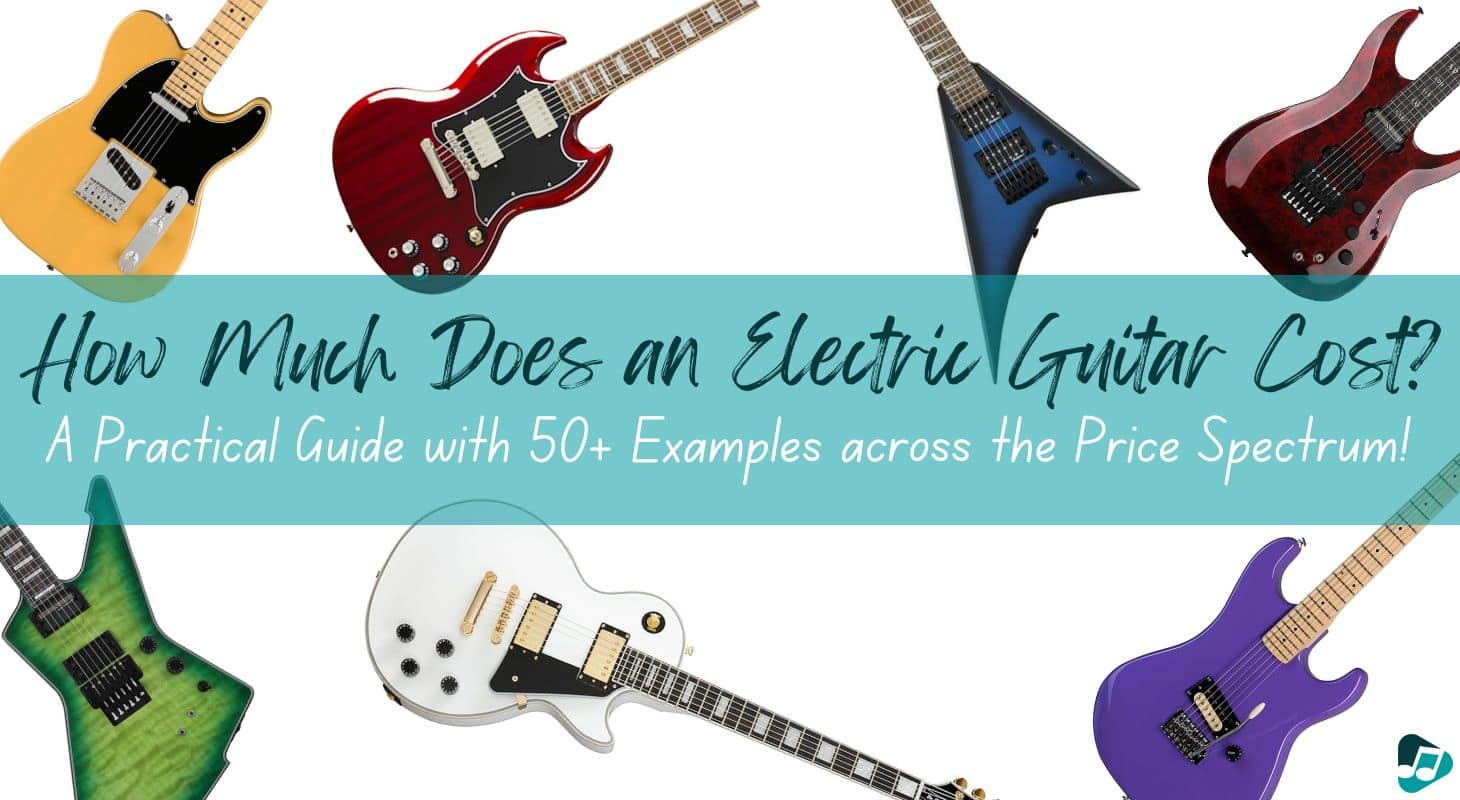A ‘good’ (or at least decent) electric guitar can cost as low as $150 and as high as a few thousand dollars. It mainly depends on where you currently are in your guitar playing journey.
The more important thing is choosing a guitar that’s not particularly bad at numerous things, since that can hinder your progress as a guitar player.
Some bands gig with $200 Squiers, while others flaunt $2,500 Les Pauls. It doesn’t mean the former is essentially a ‘bad’ guitar or that the Les Paul is the best at everything. So, a better quest would be to find an electric guitar within your budget that’s good for your own unique use cases.
I have been playing the guitar for 37 years now. Below, I’ll discuss several crucial factors that you can’t overlook in an electric guitar, followed by real examples of high-quality electric guitars across different price points. Some are meant for beginners who are just starting out and intermediate players, while some drool-worthy axes are meant only for serious professionals!
If you’re just in for the quick answer, here it is.
To get a decent entry-level electric guitar ideal for beginners, be prepared to shell out around $200 on the low-end to around $500 on the high-end. For an intermediate-level electric guitar, there are tons of excellent options in the $500 to $1,000 range. Finally, pro-level electrics can be found for upwards of $1,000. It’s just worth noting that the differences in quality and features on offer gets thinner and thinner as you move up the price brackets.
Table of Contents
What to Look for in a ‘Good’ Electric Guitar
There are some standards that you should pay attention to. A ‘good’ guitar should have the following attributes.
Stay in Tune for a Decent Amount of Time
Sure, if you 2 tone pitch bend like David Gilmour, you will pull the guitar out of tune all the time. He has many guitars sitting offstage that he swaps constantly throughout a set because he really pushes them.
For mere mortals, we should make tiny incremental tunings between songs that take 5-10 seconds.
Look the Part
Want your guitar to be bright pink? Then it should be bright pink. Does this sound a little superficial? No, it is vital. You need to WANT to pick this guitar up. That will make you bond well with your instrument.
This is still a vital part of the Telecaster equation for me. It MUST be Butterscotch. Nothing else will do. I would not bond with another finish.
Be Well Setup
The vendor should take care of this. Decent shops will pass a guitar through a last inspection before the sale. If you have chosen your instrument yet something was not perfect, then say. This will help you get your ‘good’ guitar.
When it comes to buying online, there are retailers like Sweetwater who actually do a multi-point detailed inspection and setup before shipping out new guitars.
Be Comfortable for You
A ‘good’ guitar will make you want to play it again and again and again. I love my PRS Paul’s SE. It is the pride of my collection. It is comfortable, flexible, and playable forever.
This is the magic factor in a ‘good’ guitar. I just could not put it down, so it came home with me.
Beginner / Entry Level Electric Guitars
This segment sits between $100 and $500. There is a lot sandwiched in there and there are great guitars to be found. Yet there also must be a sense of realism as well.
Not all guitars in this price range are meant just for beginners, either. There are numerous guitars mainly in the $300 to $500 range that are used not just for gigs, but also for studio recording sessions by many professional musicians.
Finding ‘good’ guitars at this level is very subjective. Remember that you are looking for an instrument that feels right to you. They get easier to find as you climb higher through this bracket. Yet there are some excellent options that can work well for the first few years as a guitarist, just be very selective when auditioning.
When I first moved to Thailand, I had a Chinese-made, no brand telecaster while I waited for my Hamer Centaura to arrive. It was a good enough guitar for the money (about $170). Heavy, but playable with a reasonable tone.
It suffered the usual budget guitar problems. Poor finishing, no setup, cheap pickups, and weak tuning pegs. It would last 10-15 minutes before dropping out of tune, less if I was pitch bending a lot.
We still need to be realistic here. The components are cheap, and this affects the usability of these instruments. Are they ‘good’? They really can be. I must advise you to play a wide selection before buying. You might be surprised by what you find.
< $150
Down at the very bottom end (< $150), we find guitars that no experienced guitarist would have much to do with, given a choice.
When I bought that playable Chinese-made guitar, I played around 7-8 that were truly horrible. I had to eliminate far more trash to find a playable guitar than I ever have in the other budget levels.
Over the years, this level has produced some somewhat-known brands too. The most famous would be “Donner” guitars. Slick marketing, direct-to-market online sales, and clever social media pushes have made them recognizable. Now they produce some of the best-selling electric guitars (mostly bundled with amps and accessories) on Amazon, like this one.
Are they ‘good’? You can check out my detailed post for more on that. In short, it’s a big gamble. It is hard to know a ‘good’ guitar in the other brackets without playing them. Donner is using that to their advantage in their sales structure.
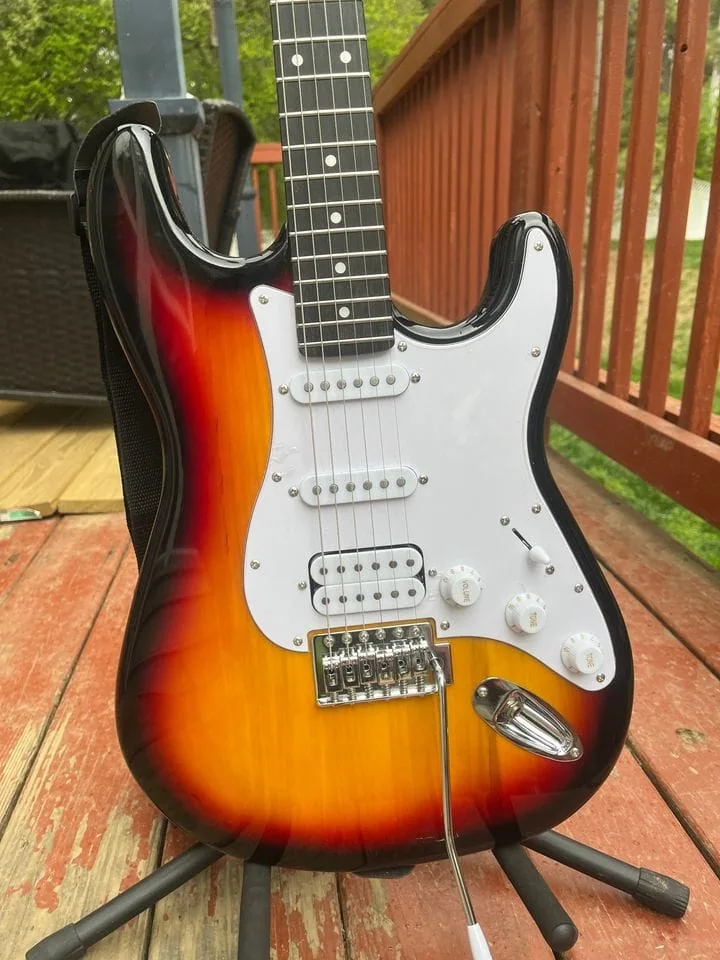
There are also several similar options with the common point being that they’re also selling mass-produced Chinese guitars which are likely just rebranded. These include Leo Jaymz, IYV, LyxPro. Needless to say, shape-wise these are also blatant copies of iconic guitars like the Strat, Tele and Les Paul.
Once we move out of this level, we come to well-established brands and their own budget offerings.
$150 to $250
First, let’s take a high-level look at the low-end of this spectrum.
This range provides a decent entry-level. The low price will always come at a cost. We find inconsistencies, including poor fretwork and rough finishes. Setups are not always amazing out of the box and the components are cheap.
There are many excellent value guitars in this area.
At around $160, the Jackson JS11 Dinky offers probably the most bang for your back when it comes to ultra low budget full-sized electric guitars. Yes, the overall finish leaves a lot of room for improvement, and the setup out-of-the-box is usually pretty bad, but at this price point it’s really hard to argue against it!
Kramer Baretta currently retails for around $180 and is a supremely power-backed barebones electric guitar. With just a single humbucker at the bridge, it’s not the most versatile beginner guitar out there, but for genres like punk and other forms of rock, it offers an excellent value proposition.
If you want a guitar from a well-known brand, other than what I’ve discussed above, at under $200 you’ll only get mini-guitars (short-scale options mainly suited for kids) like the Squier Mini and the Ibanez miKro.
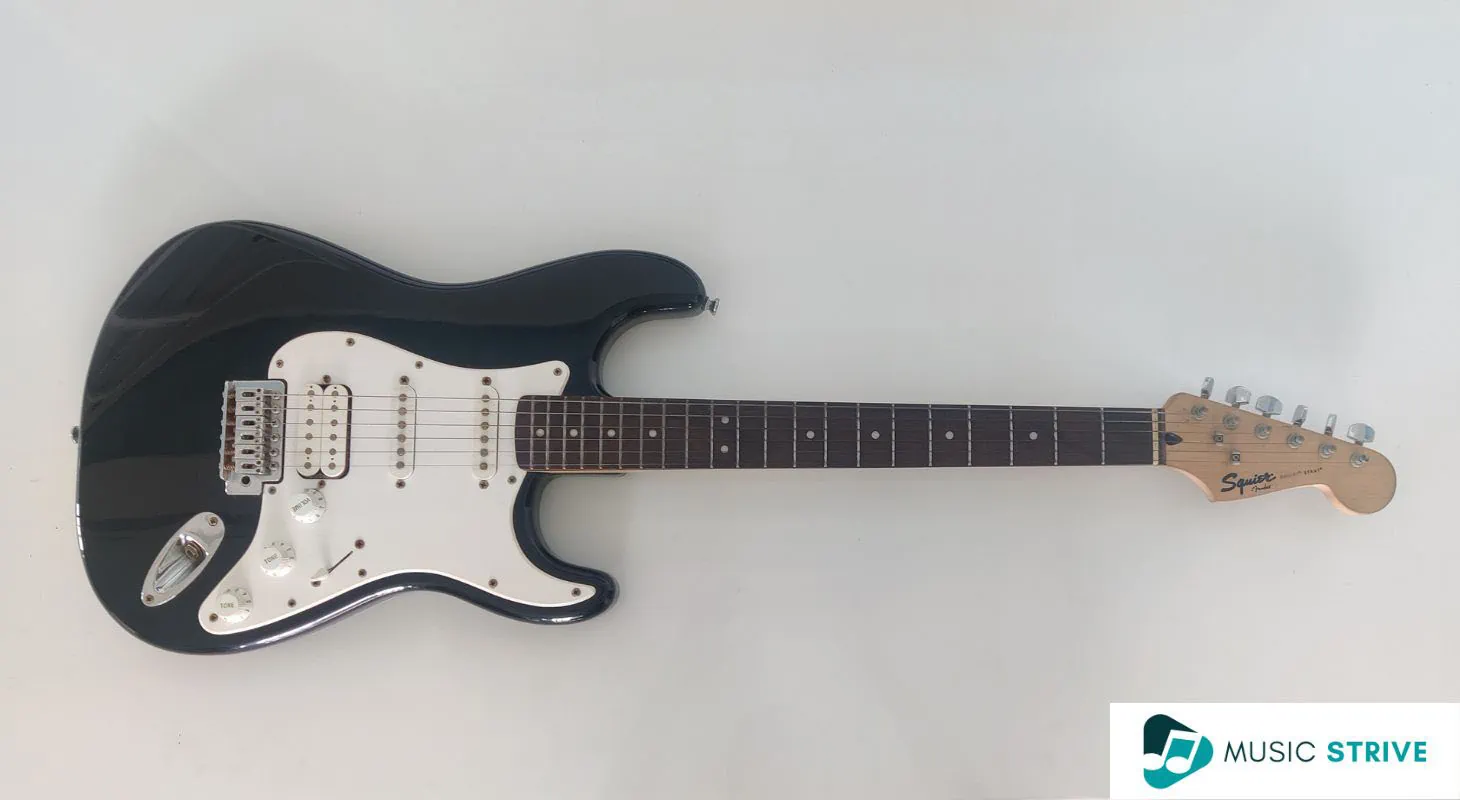
Around the $200 mark, there’s the new Squier Sonic range (read my detailed review), what used to be earlier known as the ‘Bullet’ series. They’ve come a long way, and with a proper setup, they’re now decent instruments for beginners to learn and improve on.
The best way to shop in this area is simply to avoid tremolos. Buying a fixed bridge model, such as the Squier Sonic Telecaster, will provide more tuning stability and easier setup.
Another extremely popular guitar known as a budget Strat alternative is the Yamaha Pacifica, which retails for just over $200. Going slightly over, you can find the Squier Affinity guitars, which are slightly more refined than the Sonic series.
We also find some interesting competitors here with names such as Jackson, with their Dinky Arch Top offerings, and Ibanez, with their Gio range. These bring a little more glamor to the market.
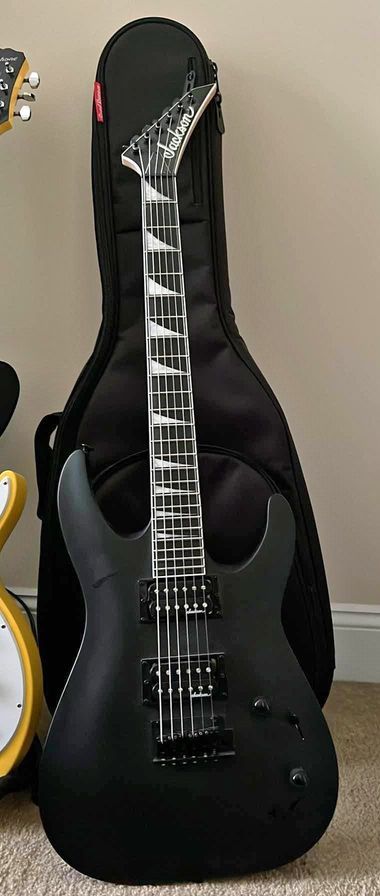
$250 to $350
Moving up the price bracket a little, the $250 to $350 range sees slightly less competition. The Epiphone Les Paul Studio E1 is a popular option among die-hard LP-fans on a budget, with its all mahogany construction and rosewood fretboard.
Also popular are some slightly more feature-packed or better refined variants of Yamaha Pacifica and Jackson Dinky.
For more non-Fender and non-Squier Strat style guitars, you have the Washburn Sonamaster Deluxe and the Sterling By Music Man Cutlass.
For players looking for an aggressive tone ideal for heavier forms of rock and metal, there are several good options in the form of the Jackson Monarkh, Kramer Striker HSS and the Ibanez RG421.
Lastly, you also have several non-mainstream (yet highly praised) options like the Jackson King V and the Gretsch G2210 Streamliner Junior.
This price range is also where you can get a taste of semi-hollow and hollow-body electrics. Well known options include the Squier Starcaster for around $300 and the Ibanez Artcore AS53 for around $350.
$350 to $400
This narrow section is dominated by aggressive guitars from brands with a reputation for building metal-ready instruments, like Kramer and Jackson.
Without getting too much into the specifics of each model, these are the most popular guitars from each brand.
- Jackson – JS32 Dinky, JS32 King V, JS32 Kelly,
- Kramer – Assault 220, Striker, Pacer Classic
$400 to $500
Next, the $400-500 segment is super busy with several popular entrants from Squier, Epiphone, ESP, Ibanez and many other brands.
Even though I’m covering these under ‘entry-level’, these instruments could easily attract a more experienced musician looking for a backup guitar for mid-song string breaks.
By far the most popular guitars in this segment are from Squier’s Classic Vibe and Paranormal Series. Most models across both series retail for around the $430 mark at the moment.
The former offers telecasters, stratocasters, jaguars, jazzmasters and other iconic guitars with the promise of offering as close to the classic sound and specs as possible at this price point. So, there are ‘50s, ‘60s and ‘70s classic vibe models of each guitar type (strat, tele etc.) on offer.
The paranormal series is a relatively newer offering and features some intriguing designs like the Toronado, the Baritone Cabronita Telecaster and the Strat-O-Sonic guitar featuring dual P90 pickups.
At under $500, you also finally get a taste of the much-revered Epiphone SG.
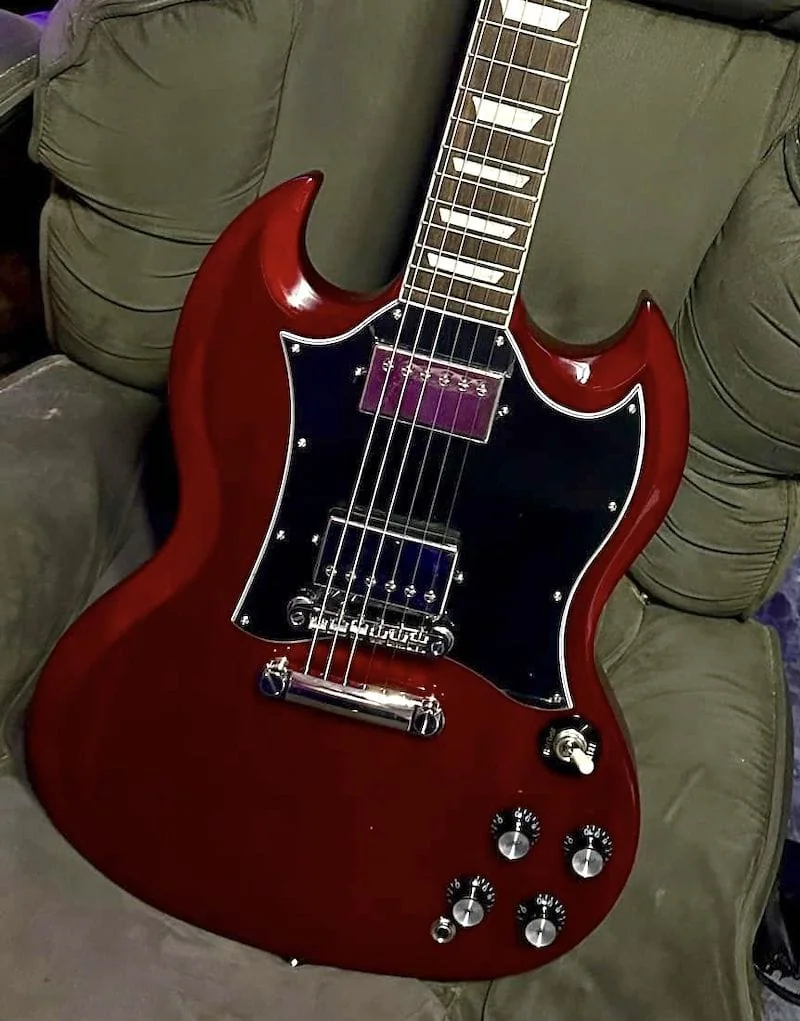
For lovers of an offset body, the Guild Surfliner offers tremendous value.
This budget will also allow you to explore some more highly-capable hollow and semi-hollow models. My personal favorites include Gretsch G2622 Streamliner, Epiphone Casino Coupe, and the Danelectro Stock ‘59, which is one of the lightest guitars you can find anywhere.
The Schecter Omen Extreme 6 performs some amazing budget gymnastics and uses some excellent tricks to squeeze an intermediate guitar into the sub $500 bracket… just.
Fast neck, beautiful detailing, excellent humbuckers, and 24 extra jumbo frets are all a surprise in this bracket. Staying with a fixed bridge has given just a little more budget for everything else, and it shows!
Another extremely popular, and price-wise similar choice would be the Ibanez Steve Vai Signature JEMJR.
We also see the Epiphone Les Paul Special in a funky old color just squeezing in here too. This is an instrument with some serious pedigree with a brand label that is very acceptable in a live environment too.
Mid-range / Intermediate Level Electric Guitars
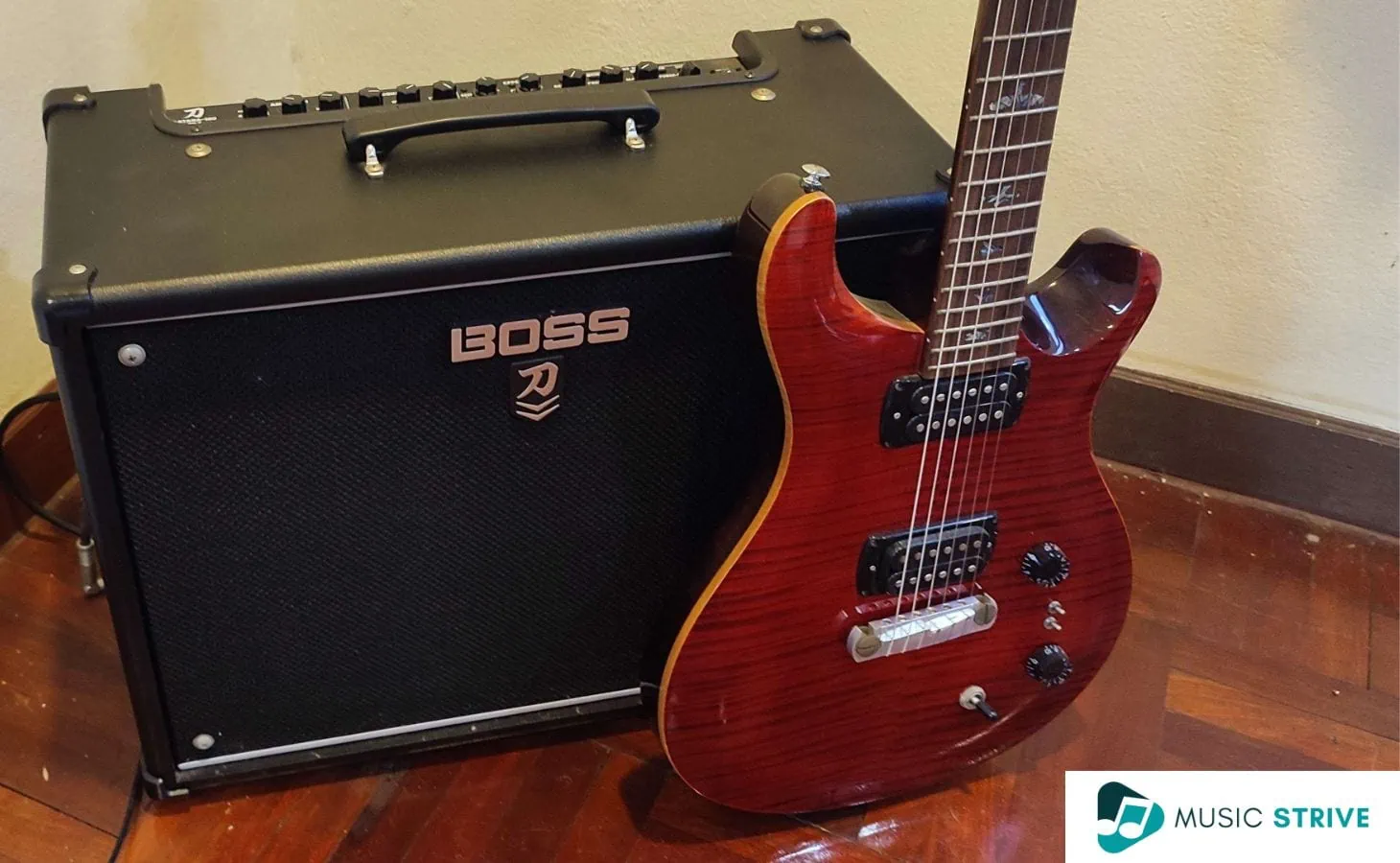
This is where most of us, mere financial mortals, fill our collection. In the $500 – $1,000 bracket, we find instruments we play day to day, gig with, and fall asleep on the sofa with.
Finding a ‘good’ guitar here is less of a struggle, yet you need to ask yourself a little more about your playing style and intended tone.
Should you be shopping at this level if you are new to playing, even if budget is not your concern? Probably not. Until you understand how you play and what you want to play, spending over $500 can easily end up being wasteful.
Even a ‘good’ guitar can be a poor guitar in the wrong hands. You really are better off spending sub $500 and getting some skills together. You will develop strong opinions of what is wrong with your choice, then your second purchase will probably be a ‘good’ one.
At this level, you will be hard-pressed to find American-made guitars. My American, handmade Hamer Centaura was purchased in 1992 for $1,200. It is near impossible to find an American-built instrument at this level. What we have is a range of overseas-built big brand names.
$500 to $750
For blues and rock players, I am hard-pressed to find a better-value guitar than a G&L ASAT Classic. This Leo Fender Telecaster is Indonesian made yet brings all the goodness of their full-fat version to the table.
For less than $600 you get every inch of the original tele and a few new tricks, including a little more “oomph” available when you push everything to 10.
Having foregone any form of tremolo to this point, we now find ourselves in the budget where Floyd Rose brings you wailing and soaring to your knees (I don’t do that now, at 49 years old, knees are a rare commodity).
Les Paul lovers rejoice! The finish and overall quality on offer with this Epiphone ‘60s Les Paul Standard is commendable.
A real step-up from Squier, the Sire Larry Carlton S7 FM offers some serious value for money to anyone looking for a Strat-style guitar and can do without a Fender logo on the headstock.
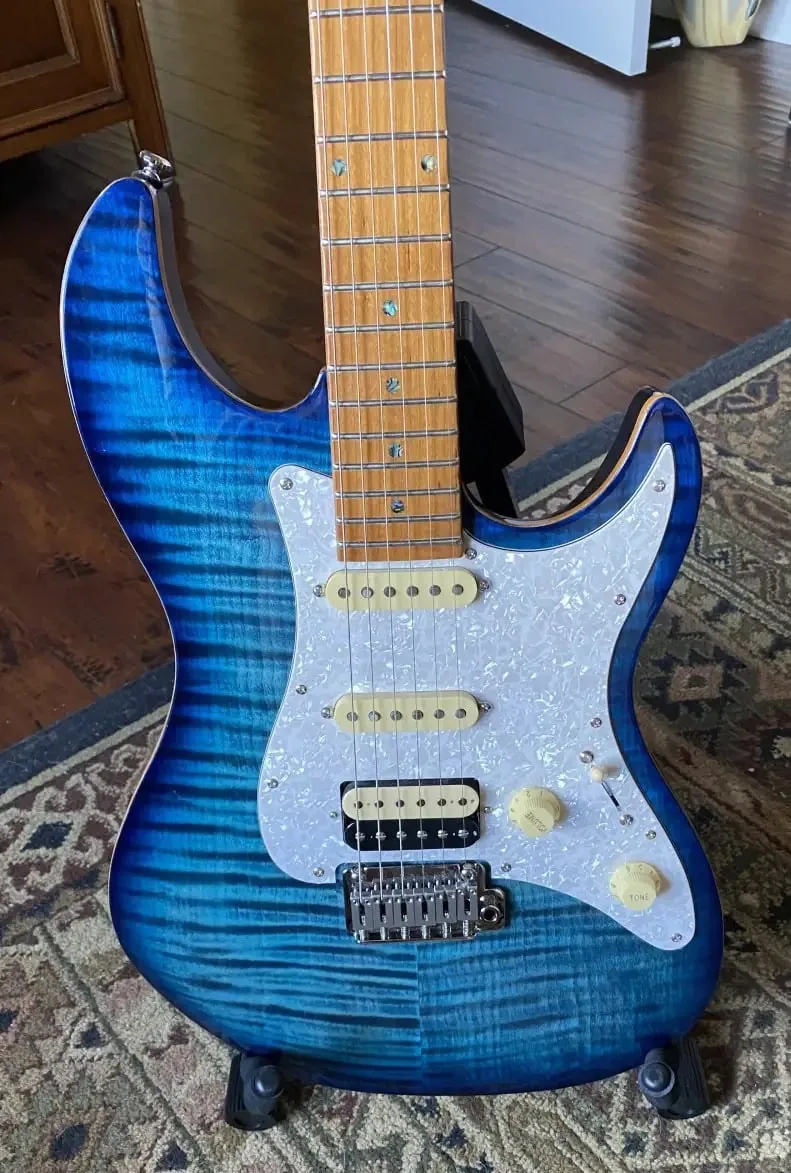
Then there’s the PRS SE Standard 24. Not much has to be said about this legendary weapon in the arsenal of budding guitar maestros around the world. A truly modern, lightweight design with one of my favorite necks in business.
For fans of rock music, my two recommendations at this price point would be the Epiphone Billie Joe Armstrong Signature Les Paul Jr for punk rockers, and the Gojira-frontman inspired Charvel Joe Duplantier San Dimas if you like those heavy riffs!
$750 to $1,000
In this price range, you can finally afford the ‘Fender’ branding on the headstock. The Player series from Fender offers a range of models made in Mexico. They’re quite a significant step up from Squier.
Another Indonesian-made beast is the ESP LTD M-400. There is nothing cheap about this $999-ticketed shred monster. If they are good enough for Metallica and George Lynch, then these are good enough for us, too!
With EMG humbuckers, a Floyd Rose floating bridge, and perfect styling, it is hard to say “No!” to this for a true rock/metal guitarist. A viable competitor for metal fans would be the Schecter C-1.
For something a little more balanced, you will find a range of Indonesian-produced PRS models. I am a proud owner of the SE Paul’s, yet I must tip my hat to the stunning SE Custom 24. This really is a very well-rounded guitar for almost every style. John Mayer fans will find the SE Silver Sky more attractive, though!
For hollow-body fans, some of my favorite options in this price range would be the Godin 5th Avenue Kingpin, D’Angelico Premier Mini DC XT and the Epiphone ES-335.
The mid-range electric guitar segment has changed so dramatically over the past 30 years. It is almost hard to justify the next leap for most players.
High-end / Professional Level Electric Guitars

The $1,000 up level is full of amazing guitars. These guitars give you extra value, yet the jump in quality is more subtle than between the entry and intermediate levels.
These are guitars we buy as an investment, a lifelong dream, or because we decided a motorbike was too dangerous as a mid-life crisis!
It is hard to find a bad guitar here. They are all good. Yet they are not all good for everybody. For example, I really wish I could play a Les Paul. I just cannot. They do not work for me. My Paul’s SE is the first PRS I have played that worked for me, and I have played many USA PRS guitars.
None of those guitars was anything but “amazing”. But that’s just me. This is where you shop when you really know what you are doing. This is where you go when you have a full identity as a guitarist.
$1,000 to $2,000
Just like an earlier section, I’ll just sum up some good options in this price range under different categories.
- Made-in-USA Fenders: American Professional II Stratocaster, Kurt Cobain Jaguar, American Performer Telecaster
- Made-in-USA Gibsons: Les Paul Special, SG Standard
- Hard-rock / metal: EVH 5150 Standard, ESP LTD EC-1000
- Hollow-body: Guild Starfire V, Ibanez John Scofield Signature JSM10
$2,000 and Beyond (i.e. ‘Budget is Not an Issue!’)
Apart from the usual well-known super-premium guitars like the Gibson Les Paul, and Fender’s American Ultra series, there are quite a few interesting options for the pro-level guitar enthusiast with no budget constraints. Among those, the Strandberg Boden Prog NX6 is a personal favorite, because it’s easily the lightest and most comfortable electric guitar I’ve ever played.
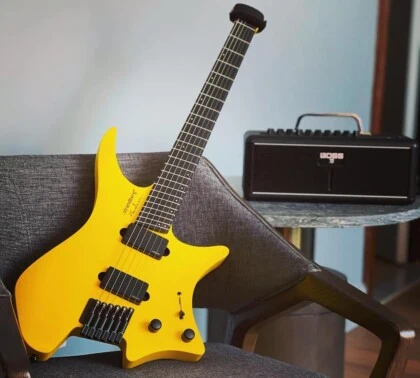
For just nearly five grand, you could own a Jackson USA Signature Phil Collen. I mean, what a bargain! With the Phil Collen designed PC1 pickup, Mahogany and Maple, Floyd Rose Original, and a pair of DiMarzio pickups to finish it. There really are no corners cut here.
Why spend that much when for just $200 less you could swing the ultimate blues lead axe? A Fender Custom Shop Eric Clapton needs no explaining. It is just THAT guitar!
$5,000 is just pocket-change. I have found a Gibson Custom Collector’s Edition Kirk Hammett 1959 Les Paul Standard rocking in at “just shy of” $20,000.
These are all amazing instruments. Yet, in the wrong hands, they will not be ‘good’ guitars. I would suffer with that Gibson, let down that Fender, but I fancy my chances on the Jackson! I would immediately be taken back to my hairspray rock days (when I had hair!) and would probably end up regretting dropping to my knees for a long solo!
When budget is not an issue, the hollow-body world also opens up a wide range of possibilities in front of you. Popular premium hollow electrics include the Gibson ES-335 (nearly $3.5K), Gretsch G6120T-59 (around $3.5K) and the Heritage Standard H-535 (around $4K).
Custom Electric Guitars
There is another option if you are struggling to get the “perfect” guitar, yet have plenty of experience. Almost all the companies mentioned will work with you in their custom workshops.
With prices from $2,000 to “whatever you want to pay”, you can have the likes of Fender, Gibson, Ibanez, Jackson, PRS, you name it, they will do it.
Without enough experience, you could end up producing something that really would not work. You would waste your money and you could never describe it as a ‘good’ guitar.
Go into this with a long list of guitar-playing battles won and lost. You will come out with a treasure that you will play to your grave. Who cares who wants it next?!
7 and 8-string Electric Guitars

I must mention these quirky extended-range characters. The short answer when it comes to their cost is – they’re just slightly more expensive compared to regular 6-string axes.
I’d say the ideal price point for low-end 7 and 8 string guitars would be around $250 to $300. You can also find plenty of great models in the $500 to $1K range, just like in case of regular electrics.
I played the 7-string Ibanez Steve Vai model that mainstreamed these wide fretboard shredders. It was fun to have that extra bass level to go to, yet I prefer just drop-tuning my bottom string to D. I do not have the spider-like fingers of Mr. Vai so I just could not work as well with the extra space.
8-string guitars are most widely used in metal environments. They become very common in the death metal sub-genre with musicians such as Misha Mansoor and Javier Reyes. Yet there are a few players from other genres getting in on the act. The most notable player is Charlie Hunter, who plays a Novax Charlie Hunter edition.
Whilst this guitar is not readily available, Strandberg makes a range of 8 strings in their Boden model. Played by uber-technical guitarists who just felt that 7 strings were not enough.
If you’re interested, we have a dedicated article on cheap 8 string guitars here.
Final Word – How Much Does a ‘Good’ Electric Guitar Really Cost?
Honestly, even I could find a ‘good’ guitar under $500. It is just that you will filter through a lot of terrible guitars to get there, especially when you’re dealing with a bunch of absolute bottom-of-the-barrel axes.
Remember, it is not the model that is the problem in this range. It is the inconsistent build quality. If you like the guitar but something just isn’t ‘right’. Play another identical model. You might just have picked up a lemon!
Moving up the price range, we find ‘good’ everywhere. Yet the problem here is a lack of experience. You will end up wasting a lot of money if you have not established your guitar identity yet.
‘Good’ guitars can cost any amount. The real secret to making a good choice is you! Do not be pushed by some slick sales guy or amazing deal. A few dollars is not a great equation when buying a guitar. If you are not finding anything ‘good’ in your budget, wait for another pay check or 2, and you will not regret your decision!

